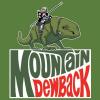Leaderboard
Popular Content
Showing content with the highest reputation on 02/07/2024 in all areas
-
One done, one drying/curing. Next up cover strips. Sent from my SM-N981U1 using Tapatalk3 points
-
2 points
-
Wow, I had no idea you could do that! I worked with acetone quite a bit in my last job. I am embarrassed to admit that I think it smells kinda good, haha. Could explain my behavior2 points
-
Quick answer. No required. Just in case you haven't seen this thread about trimming the thighs1 point
-
I added a 2 inch piece of foam behind my ab, you either need something to push the ab forward or use a locking setup on the sides so the kidney can't go any further. Reference of a locking system, personally I would have it locking closer to the ends of the Ab/Kidney so the strips don't bend1 point
-
Trim away at the tops, James! Many do that simply for comfort, especially on the inner halves of the thighs. I've kinda kept a hybrid where the returns are gone on the inner thigh area, and then tapered them out to thin return edges on the outer thighs. That being said, before too long I may take the returns completely off. I'll let the DOs give the final word though. Also here are two of my fav return edge and reference threads by our new DL! https://www.whitearmor.net/forum/topic/48166-return-edges-101-ottk/ https://www.whitearmor.net/forum/topic/48335-quick-crl-reference-guide-for-your-ot-build-pics-notes-tips/#comment-6736581 point
-
1 point
-
With permanent glue you could try a couple of tricks, soak in warm salty water, it's a bit like when you get glue on your hands the sweat can help to loosen the glue, or place the part in the freezer (if you have one larger enough) you can then bend slightly and the glue may crack and let go.1 point
-
FYI if you need to make any ABS paste acetone is used for that (some add between the bottom ridge on the thighs)1 point
-
I left some return edges as I have pretty skinny arms and it helps to give the full appearance. I have noticed on the WTK kits there are a few more bumps and lumps in places, normally where they aren't really seen so I wouldn't worry too much. Scratches may be because of transport and not individually wrapped. Wait until you see the underneath of your forearms after a few years trooping, you'll see lots of scratches, you tend to rub on other armor or even your blaster (and younglings heads )1 point
-
I noticed that in multiple areas on my kit. Much of it was in areas that ended up being cut away as excess material. I can't tell exactly from the really close-up photo, but the one below it (showing the scratches) shows lumpiness in the excess that will be cut away if you remove all of the return edge.1 point
-
Just cut all the return edge from the biceps. They'll be much more comfy under your arms that way. Flat plastic is where it's at for all arm armor. And that looks like non-armor area with the waviness. I think it'll get cut out.1 point
-
1 point
-
This new EIB visual checklist for the Artillery Stormtrooper is now available. This checklist matches the current CRL. Go Forth and Build! A printable PDF is also available: 20 FISD Artillery Trooper L2 EIB - Ver 01 2-2024.pdf1 point
-
This new EIB visual checklist for Commander Pyre is now available. This checklist matches the current CRL. Go Forth and Build! A printable PDF is also available: 21 FISD Commander Pyre L2 EIB - Ver 01 2-2024.pdf1 point
-
I have the ab section altogether and gold leaf ordered. That's next up, going to try for this weekend!1 point
-
I was at the RS studio a week or so ago when they were working on the DLT-19 and it’s impressive [emoji108] Sent from my iPhone using Tapatalk1 point
-
FISD Detachment Leaders 2006-2007 - Paul Hoeffer “Daetrin” TK8020 2007-2008 - Ed DaSilva "Exodus" TK4878 2008-2009 - Terrell Reber "SuperTrooper" TK1787 2009-2010 - Paul Hoeffer “Daetrin” TK8020 2010-2011 - Paul Hoeffer “Daetrin” TK8020 2011-2012 - Paul Hoeffer “Daetrin” TK8020 2012-2013 - Mason Carson "dashrazor" TK 4603 - Mid Term Change Tom Gardner "RogueTrooper" TK5940 2013-2014 - Eric Brager "Darth Aloha" TK9674 2014-2015 - Mathias Rodstedt "Locitus" TK2959 2015-2016 - Eric Brager "Darth Aloha" TK9674 2016-2017 - Tim Waychoff "Dark CMF" TK51878 2017-2018 - Paul Hoeffer “Daetrin” TK8020 2018-2019 - Paul Hoeffer “Daetrin” TK8020 2019-2020 - Sarah Bailey "Alay" TK20466 2020-2021 - Andrew Franke "Sly11" TK11469 2021-2022 - Andrew Franke "Sly11" TK11469 2022-2023 - Andrew Franke "Sly11" TK11469 2023-2024 - Andrew Franke "Sly11" TK11469 2024-2025 - Joseph Pedigo "justjoseph63" TK10963- Mid Term Change Chris Pearson "themaninthesuitcase" TK-109111 point
-
Update: with the help of a mate I ended up getting it back together. He held the catch spring back and kept the buttplate in place, I then held the hook piece in place and hammered in the locking pin. The tension of the spring is what makes this so difficult. The blasterfactory one isn't as strong but it's still a pain. I'm not sure what method Chris uses when assembling his aluminium ones, but man, props to him because this was such a hassle just to swap the catch pieces over. I do not recommend lol.1 point
-
I got my blaster finished about 3 weeks ago. I didn't post because I managed to lose the pix... heh. I uploaded them to the wrong folder. Anyways, here we go! Both LEDs glued to the muzzle with their stock holder. I considered some sort of light pipe to make the whole barrel light up, but this method was easiest and brightest. The Blaster Factory handle doesn't actually have clearance to allow the rotary switch to work in stock condition. All of the pins make contact with the inside of the housing. I dremeled the flat side like crazy (as seen above) and created just enough clearance to allow the selector to work. This was the first photo of my blaster actually blasting! It might not look like much, but that blaster makes pew-pew noises! I then shortened the wires up, built up the handle, and sealed the brain inside a protective wad of electrical tape. It lives just behind the bolt cover. I drilled and hollowed the back end of the blaster enough to allow the speaker and battery pack to fit. It pressure fits in there nicely, yet is easy to pull out for battery changes. The speaker is wonderfully loud in the back of the blaster. well... sorta. More on that in a sec. AAA battery pack from a flashlight. One of the many things I borrowed from Tino's excellent Lucky #11 build. This is the same voltage as the factory battery pack, but much much smaller in form factor. The one downside of this conversion - this was my only real option for battery placement. A small bit of spring was sacrificed. It's barely noticeable to anyone else, and enables fantastic PEW PEW noises, so it's a sacrifice I was willing to make. And then I got everything put back together and put the rear cap on and.... (pew pew). Yes, it was no longer PEW PEW. A lot of the speaker noise was coming out the back of the blaster. With the rear cap in place it was muffled quite a bit. I didn't want to further weaken the blaster by moving the battery farther forward either. So I started looking into tiny speakers. I got these tiny 20mm speakers off amazon which fit PERFECTLY in the 20mm recess inside the Quest Design blaster. I wired it inline with the factory speaker. There's no extra voltage going anywhere, so no extra sound is produced. I'm just splitting the amount of sound between the two speakers. The speaker goes nicely in the front of the barrel. It is also FAR less muffled. Noise actually escapes the plastic tube now! I made a decent fitting bolt cover out of thin aluminum sheet and started work on the clearing strip. Having that rear bit still in place let me get the angle right easily. One clearing strip! I then cleaned out the back piece for a metal inlay. BAM! A little glue and I have a metal bolt. It reflects the light so much more nicely than the painted resin. I gave it a little weathering and then... Finished! Again! For now! I'm seriously digging the metal handle and rubber grip. A bit dirty and in need of fresh clearcoat, but it's back together. And WORKING! So tasty. And here's a crappy vid showing it in action.1 point
-
And here we are again. Just when I thought I was done, they pull me back in. @Hideya's excellent Disney blaster thread inspired me to take my Quest Design a little further. I found an unboxed Disney Parks blaster for $26 shipped on ebay and harvested the guts. It makes the most fantastic pew-pew noises and has blast and stun settings. SOOOO awesome. I need my pretty blaster to make noises. Every time I've trooped someone has commented on how pretty it was and asked if the blaster made noise. I had to dejectedly say "no" each time. No longer. I'm making my blaster go pew-pew if it kills me. And it. HOW to make the trigger work on this pre-built Quest Design? That's been my struggle for the past few weeks. I could hack things out of the handle and somehow make it work... but I'd probably need to remove the handle/grip to do it. I'd certainly be weakening things. And what if the trigger action wasn't very satisfying or very reliable? What if a switch broke and I had to dig back inside the hacked apart blaster? It seemed like the best way to do this in my own particular build was with a whole new grip. And Blaster Factory sells the grip by itself for about $90. This hunk of metal and plastic is gorgeous. I thought my resin stuff was decent. This is quite another level. The desire to go ahead and build a whole metal blaster is very much there, but I want to see how far I can Frankenstein my QD before I do another. I had to strip it down of course. How could I not? It comes apart and goes back together in a very satisfying manner. If a switch dies sometime in the future I'll be able to fix it without affecting the integrity of the blaster more than I'm gonna in the next few days. The grip comes with switches pre-installed. I just have to wire them up. I also have to take a dremel, saw, and other tools to my very pretty E-11. I'm a little worried. To do: - Remove stock handle/grip/trigger. Carefully. - Create a passage for wiring. - Create access for the BF grip screw attachment. Probably cutting out the bolt. - Install BF grip. - Find a place for the speaker. Probably in the counter. - Find space for the uber-tiny control board. Probably in the bolt hollow. - Create a new bolt. - Question my sanity. - Find space for the batteries. It's very very narrow inside the QD. - Wire everything up. - Put blaster back together. - Re-pretty the blaster.1 point
-
I got @Scimitar's blaster in the mail, did the build, and shipped it back to Eric... and I managed to not post the photos. I'll just share the finished ones instead of the build. It's another Quest Design using identical parts, so they'd be slightly different angles of the same build photos. Parts added/changed: - Real folding stock from @justjoseph63 - Replica Hengstler counter from BlasterFactory.com - Greeblie kit from @justjoseph63 - Some spare upgrade kit parts from @T-Jay - Scratch build sight box - weathering and clear coat This would look a lot like the before photo. I added some brass weathering to the scope and gave everything a ton of clearcoat. The whole blaster got 6 coats of matte clear. The T-tracks and grip got an additional coat of semi-gloss clear. Then the grip got 2 more coats of gloss clear. Sounds like a lot, but the finish is really lovely. I built a sight box using the same stuff I did on mine. Even got to use another of T-jay's threaded rods! I built new capacitors from left over T-Jay stock. There was exactly enough for the two guns. Top scope greeblie from Joseph is looking mighty fine. The counter is a reproduction piece from blasterfactory and is really fantastic. Eric wanted the same Miata odometer guts that I used in mine, as he's also deep in the Roadster cult. The back side of the counter is open showing the labeling. Rather cool feature. Awwww yeah! The folding stock from Joseph and sight box build were the reasons I was doing this build. Since everything was fresh in my mind and all the tools were handy, this took about 25% of the time that my first one required. Both blasters fresh from factory rebuild. Eric's up top, mine on the bottom. From the same assembly line. Ready for action.1 point
-
That pic! hahaha! I feel seen. Last weekend's hacking was some tiny details. This is my Before pic. It's not too bad I guess. There's decent detail. It's serviceable. But it could be better. Accurate screw/nut vs the huge thing that came with the mold. Much better! This was super easy, so I decided to start in on the three capacitors. I'll admit, they look rather wonky in this shot. They seemed a bit better IRL. They're barely visible anyway though. And just like that they're installed! This took an incredible amount of grinding to fit. The "floor" beneath these capacitors needed to be mostly flattened to get them all fitting underneath the center support/divider thing. But they fit! Rear insulators painted black, front insulators painted brown. I built the front support piece and ran wires through, around, and over. Some tiny resistors made their way underneath each capacitor. You can also just barely see the front wing. And wired up. It really looked like a mess until the spiffy red wires made their appearance. I no longer hate this and am pretty dang proud of the result. They're gonna need some careful weathering to really bring them out. And then... Reposting this to show that sad front sight. Look at that tiny thing. It's a bit better already. Please be forgiving when looking at this. I molded and sculpted this in place without removing the guard frame. It's not quite correct. The dimensions are a bit too large overall, but it's decent, about the right shape, and much much better than the nothing that was there before. The little block is made out of POR15 epoxy clay. It's easy to work and something I've used several times before. It smooths when wet and cures in about an hour. I sculpted the blocks with long thin screwdrivers. I cut down a threaded rod as per Tino's excellent tutorial. Drilled in place. I used green stuff to get the two metal pieces protruding to where I wanted them. And painted! Everything is protected by the guard. I also sanded the front of the guard flat to remove knurling where it shouldn't be. SO MUCH BETTER! Not perfect, but better than what was there. And for being sculpted in place I'm quite happy with the result. I'm feeling good about the blaster now. It's about time for paint and weathering.1 point
-
WARNING: The following content may be controversial! DISCLAIMER: These are my opinions from years of experience, pure and simple. Over the years I have noticed many future Troopers doing an OT (Original Trilogy) TK ask about return edges before, during (and after) their build... If this is a subject that you are curious about, grab a cup of coffee or a tall glass of frosty blue milk (this is a long post, lol) and read on.... QUESTION: "What are they, what do they do, and should I leave them, trim them down some or remove them"? ANSWER: Return edges are part of the molding process and provide strength in certain areas on the edges of your armor. They also provide a heftier look to some pieces. To help you decide whether or not to keep them is why I started this thread. Here I will attempt to go into a few details about them. Know in advance that as mentioned I personally am NOT a fan of them in many areas for several reasons (listed below). Some people love them and some may disagree with my opinions... many of you may trooped for years with no problems which is AWESOME, but many folks have had issues and questions. 1. In most areas they are not screen accurate- In looking at the screen caps and film used armor photos below you will notice their scarcity. 2. They can (and in many cases will) get very uncomfortable- Many folks like the "thicker" look it gives their armor, but they can cut into you, especially in the area where your arm bends ("armor bite") and the groin area (chafing). As Troopers we do a lot of walking and arm bending carrying a weapon, so keep this in mind. 3. If aiming for higher levels they can cause fitting issues- Examples: A. If you leave them on your forearm openings and glue on the cover strips, they will need to be completely removed at the wrists for Centurion level, making the opening too wide. This can lead to you having to remove the cover strips, reduce the sides of the forearms and re-attach the strips. Quite a pain in the posterior plate to say the least. *** See EXAMPLE 1 below. B. If they are overly thick on the bottoms of your shoulder bells, they can prevent them from lying snug against the biceps. 4. They can cause splits/cracks- Especially on some armor areas. ABS is designed to flex, and in some cases a small amount of return edge is fine, but too much can cause stress on those areas. *** See EXAMPLE 2 below Over time that stress will take it's toll somewhere, and that is usually the return edge. Anovos armor is especially prone to this on the sides of the chest/back plates and neck openings. I suggest shimming these on the rear with ABS strips and E-6000 to prevent it. Let's start with the chest plate: Note how the ones below (including the back plate) have either no or minimal edges with no cracks or splits. Now here is a screen used one with a pretty prominent edge, Notice the stress crack. Now, onto the ab/kidney/back plate: To keep them in line and prevent them from overlapping, it is suggested that you LEAVE a fair amount of the edges on the top/bottoms of the kidney and bottom of the back plate, especially if using the "classic" strapping method. Yes, these can split/crack as well but not normally. Shoulder Bells Trimming off the entire edge on the bottoms is not only screen accurate (first two photos), it allows them to rest close to the bicep (bottom photo). Third photo shows "suggested" trim lines (red) of an untrimmed bicep. My recommendation is the blue line. Biceps/forearms For sheer comfort and a sleeker look, I recommend removing ALL of the top and bottom edges before fitting/gluing them. First, no one sees the tops (covered by the shoulder bell) and the bottoms can cut into your arms (armor bite). Suggested cut lines in red. Again, if you do get armor bite you will have to take them both completely apart, remove the edge and re-fit. Better to think ahead. Some (myself included) like to leave a bit of the return edge on the outside of the top of the forearm for a thicker look. However, I highly suggest removing all from the inside part (the "scoop") where your arm bends. Again, an armor bite issue. This should also be done BEFORE final fitting. Here are some screen used examples: For level 3 (Centurion) all of the return edge on the wrist opening must be removed, including the area inside the "hump" as seen below: Posterior (butt) plate: Again, it is suggested that you leave some of the return edge on the top (and bottom in most cases) to keep it from riding under/over the kidney. Now, the BOTTOM of the posterior plate is where we often find splitting issues. Should you leave some return edge? Sure! BUT(T), when trimming the corners, (see below) be SURE not to give it a sharp angle... this is where the trouble usually starts. Instead, give it a slightly rounded angle (as shown in green). Thigh tops The tops of the thighs are where we see a lot of questions. I recommend removing all the return edges from the entire upper parts, and here is why: As mentioned above, you will be doing a lot of walking. If you have the edges (or at least a large portion of them) intact, the friction and inside facing angles can really chafe the heck out of you, especially on the inside of the groin area. (Ouch). If there are sharp edges/points on the tops (below) these will poke into you. When trimming these, just follow the existing line. Also, if you do your final fitting, glue everything together and find this out afterward, you will have to take the entire thing apart, remove the return edges, trim down the sides and then re-build/glue them back together. The reason is that afterward the opening will be entirely too large and you will have a giant gap all the way around. Not a good look. Easier to do it beforehand, trust me. As seen below, there were no return edges (or at least minimal ones) used in the films. Sniper knee plate The bottom of this piece is an area often not trimmed enough. To allow it to sit flat (or very close to flat) against the top of the calf enough for the glue to adhere properly I suggest removing most if not all of the bottom edge. Note how in the first and third photos how the sniper knee is parallel to the front of the calf. Last up, a photo that best illustrates my point about return edges and how they were not really present in many places on ANH armor. *** Example 1. of what happens when you have to reduce the return edge(s) after attaching cover strips. NOTE: For the example below I am using an ATA bicep (first 3 photos). Be aware that ATA makes the "suggested" cut line on their return edges pretty slim (a GREAT thing in my opinion). As seen on the armor in the 4th photo, if followed, the "suggested" cut line makes the return edges much wider (red line). Top view Bottom view For the purposes of this tutorial, we will assume that the ATA has those wider suggested return edges. Okay, let's say you really like the thicker look the return edges give your armor, so you left them pretty wide during fitting and then glued on the cover strips. Enough to get your arm through with a little extra room. Should be good to go, correct? BUT, you find that after having your arm bent for a while they cut into you (armor bite), so you find you have to reduce or remove most or all of it. No biggie, right? Just break out the Lexan scissors or Dremel and cut away, leaving the cover strips attached. Easy! So you remove it and then you run into the fact that the opening is now enormous. This is not a good look, and can result in the piece(s) jangling around and not being approvable at higher levels (or even Basic depending on your GML). What I am getting at with the above info. is that if you decide to remove them, it's better to do it before final fitting/gluing. Side note: Many biceps have an unusual shape at the tops (in red, below) normally located on the inside. This can be completely removed. Doing this will not affect approval at any level, and is screen accurate. It sits under the shoulder bell so no one sees it anyway! Screen used bicep USELESS TRIVIA: Many have asked about the "thumbprint" that many armorers have on the left bicep (screen used example below). Some think it is so you can tell them apart, but I was speaking with Brian Muir a few years ago (he sculpted the original armor used in ANH) and asked him about it: "To be honest, I have no idea... it was not in my original sculpt, and must have been a mistake in casting". There you have it. *** EXAMPLE 2: What causes cracks/splits: ABS bends pretty well, just as it's designed to. BUT, when there are return edges involved that changes the game. For the below example I used a 2 inch wide strip of ABS with a 1/2 inch "return edge". Looks pretty solid, right? That's because the edge provides stability. Now I am bending it up/in to simulate use over time. (More than it normally gets bent in many cases, but only to prove a point). That stress has got to go somewhere, and it's the return edge that takes it all and gives way, again causing cracks/splits. The red arrow shows a weak area where the stress in concentrated and cracks can form. Even if trimmed off afterward that area will be prone to splitting, so a small shim behind it is suggested. To sum it up, return edges are not meant to bend a lot. I suggest inspecting your armor occasionally to spot any existing/potential cracks/splits so that you can catch them before they get worse. I hope this helps answer any basic questions you may have, and always feel free to ask more detailed ones here or offer differing opinions.1 point
-
HI, they're actually not a Centurión requirement. It's more a preference, but read this post introduction. "If aiming for higher levels they can cause fitting issues- Examples: A. If you leave them on your forearm openings and glue on the cover strips, they will need to be completely removed at the wrists for Centurion level, making the opening too wide. This can lead to you having to remove the cover strips, reduce the sides of the forearms and re-attach the strips. Quite a pain in the posterior plate to say the least. *** SeeEXAMPLE 1 below. B. If they are overly thick on the bottoms of your shoulder bells, they can prevent them from lying snug against the biceps. Nowhere in the Crl for L3 express they are required. You can Read, look at the gallery section and Centurion approvals. Cheers.1 point

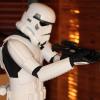
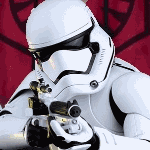
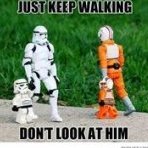

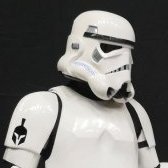
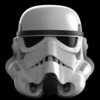
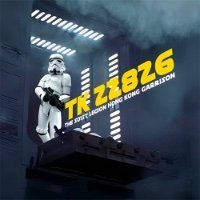
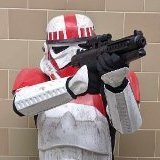


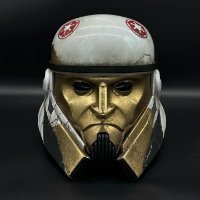

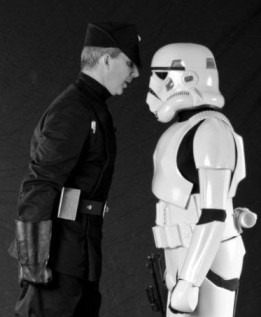
.thumb.gif.3133dfe8baa328ad146bfe40afe330f0.gif)
